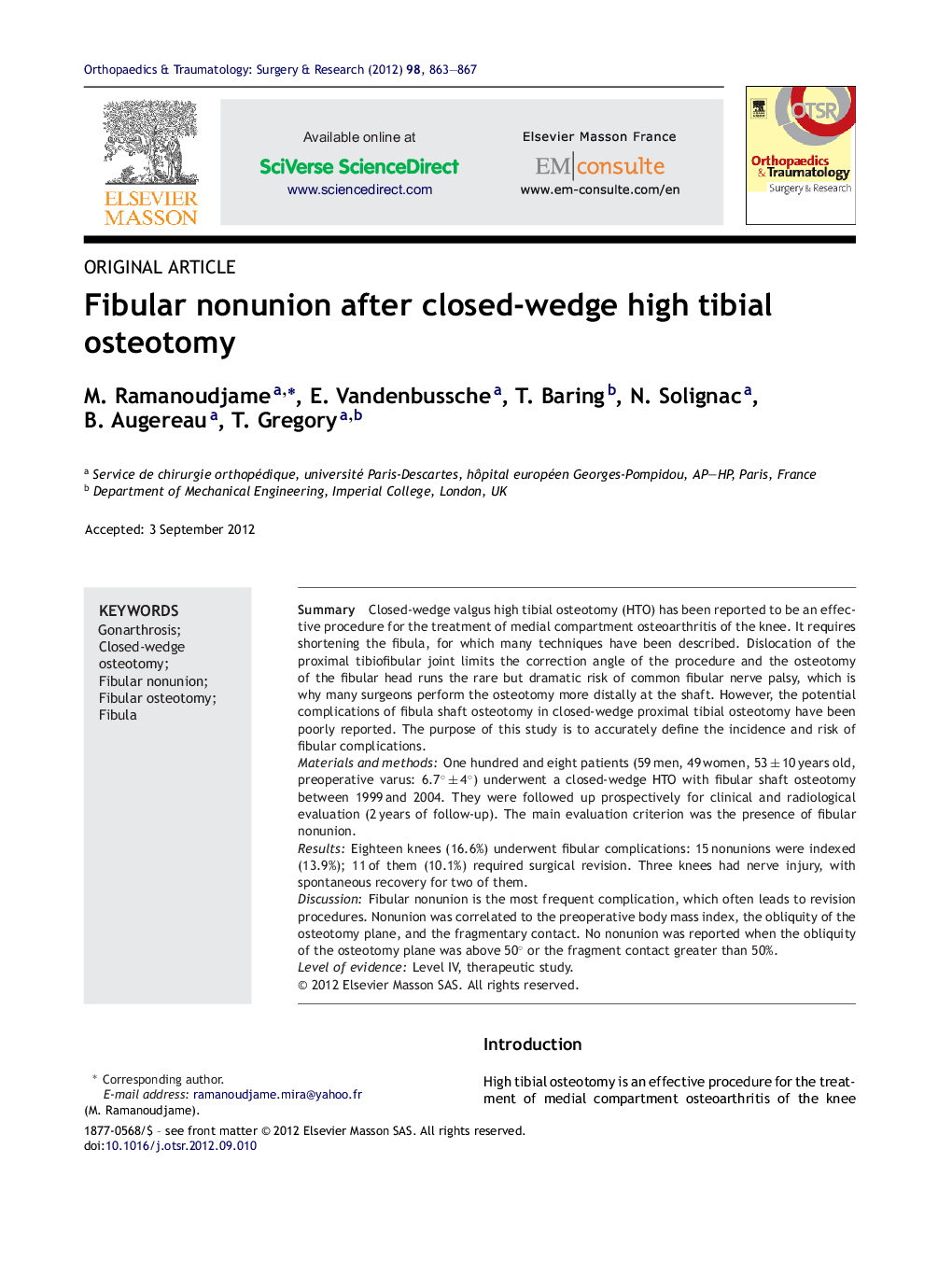| کد مقاله | کد نشریه | سال انتشار | مقاله انگلیسی | نسخه تمام متن |
|---|---|---|---|---|
| 4081948 | 1267616 | 2012 | 5 صفحه PDF | دانلود رایگان |

SummaryClosed-wedge valgus high tibial osteotomy (HTO) has been reported to be an effective procedure for the treatment of medial compartment osteoarthritis of the knee. It requires shortening the fibula, for which many techniques have been described. Dislocation of the proximal tibiofibular joint limits the correction angle of the procedure and the osteotomy of the fibular head runs the rare but dramatic risk of common fibular nerve palsy, which is why many surgeons perform the osteotomy more distally at the shaft. However, the potential complications of fibula shaft osteotomy in closed-wedge proximal tibial osteotomy have been poorly reported. The purpose of this study is to accurately define the incidence and risk of fibular complications.Materials and methodsOne hundred and eight patients (59 men, 49 women, 53 ± 10 years old, preoperative varus: 6.7° ± 4°) underwent a closed-wedge HTO with fibular shaft osteotomy between 1999 and 2004. They were followed up prospectively for clinical and radiological evaluation (2 years of follow-up). The main evaluation criterion was the presence of fibular nonunion.ResultsEighteen knees (16.6%) underwent fibular complications: 15 nonunions were indexed (13.9%); 11 of them (10.1%) required surgical revision. Three knees had nerve injury, with spontaneous recovery for two of them.DiscussionFibular nonunion is the most frequent complication, which often leads to revision procedures. Nonunion was correlated to the preoperative body mass index, the obliquity of the osteotomy plane, and the fragmentary contact. No nonunion was reported when the obliquity of the osteotomy plane was above 50° or the fragment contact greater than 50%.Level of evidenceLevel IV, therapeutic study.
Journal: Orthopaedics & Traumatology: Surgery & Research - Volume 98, Issue 8, December 2012, Pages 863–867